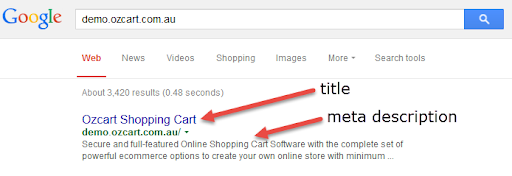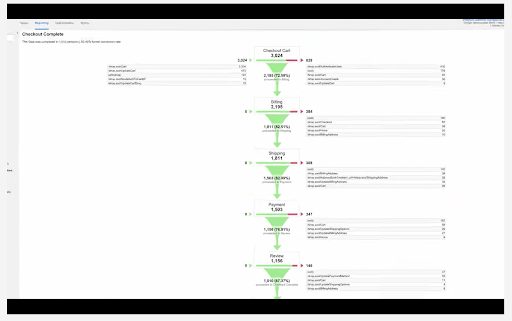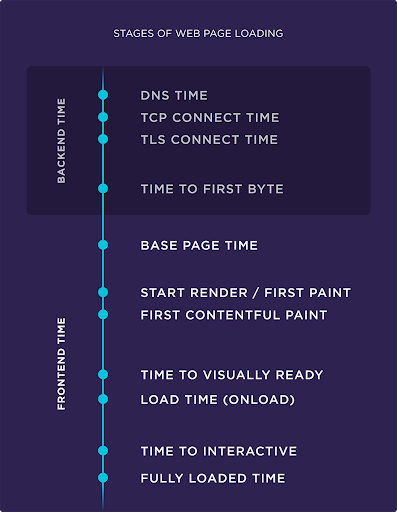9 Crucial SEO KPIs to Track the Success of Your Digital Marketing Efforts

You may have heard that success, much like beauty, is in the eye of the beholder.
But wouldn’t it be better to see that your hard work is paying off with some tangible measurements instead of hoping the eye of the beholder confirms it?
Tracking SEO KPIs solves that dilemma. You can easily track a set of measurements showing how well (or not) your efforts are working.
We’ve collected the nine SEO KPIs you need to monitor to truly see the results of your labor. That way, you can reap the rewards of your success and track your efforts.
While there are many KPIs you could track, we’ve narrowed it down to these essential nine:
1. Average session duration
Average session duration is exactly what it sounds like; it’s the average amount of time visitors spend on your website.
The higher your average session duration number is, the more time users spend on your website engaging with your content. It’s a clear indicator that your SEO efforts are paying off.
Here’s an example of what a session might look like:

Image Sourced from support.google.com
And if your average session duration is low?
Visitors aren’t spending as much time on your site, and you should investigate why. Have you recently revamped your website? Do you have straightforward navigation?
Improve your average session duration with updated navigation or more high-quality written content. Follow a customer’s journey through your website to ensure they’re not being misdirected or stopped at a critical funnel point.
Increase the number of blog posts you feature. For example, if you’re offering a video conferencing solution, a blog post entitled “What is VoIP Phone Service?” would benefit first-time customers who are unfamiliar with Voice over Internet Protocol technology. You have many options to prolong the customer journey and keep visitors on your site.
2. Organic sessions
Organic sessions comprise a single user going to your website from a search engine, spending time on your pages, and then exiting.
For example, if a user searches “what is IP technology,” clicks on the top site, spends five minutes reading about IP technology, and that’s a complete organic session.
If your organic session metric increases, it clearly indicates that your SEO efforts are working. People are reaching your site, staying on your page, and engaging with your product and content. More organic sessions mean more people are finding you through search, and that’s what you want from SEO.
3. Organic click-through-rates
Organic click-through rate measures the number of people that click on a search engine result.
If your organic CTR metric is higher, that means more people are clicking through to your page from the SERPs (search engine result pages.) Crafting the perfect title and meta description (what appears in the SERPs when users search particular keywords) can improve your ranking, thus resulting in greater organic CTRs.

Image Sourced from ozcart.com
That means if someone runs a search asking “best voip line providers in my area ” and your website result mentions the top VoIP line providers with a clear description and a catchy title like “The Best Business VoIP Providers for 2022,” you have a high chance of grabbing more organic clicks.
4. Branded and non-branded traffic
There are two kinds of traffic, branded and non-branded, and each has a vital role in SEO.
Branded traffic includes visitors to your site who already know about your business from other marketing efforts, like a local television ad or a personal recommendation from a friend. As such, they search for you using your brand name, website address, etc.
Non-branded traffic results from someone searching particular keywords and clicking through to your site from the results. They weren’t intentionally looking for your business; they organically found it.
While tracking branded traffic won’t directly pertain to your SEO efforts, you’ll want to follow the change in numbers between branded and non-branded traffic. Your SEO efforts will be visible as your non-branded traffic metric increases compared to your branded traffic number.
5. Keyword rankings
Monitoring your keyword rankings lets you see how your top-performing keywords are ranking while keeping an eye on the keywords you’ve introduced as part of your SEO strategy.
For example, your website will automatically include many references to voice-over-internet protocol (VoIP), particularly when discussing features or benefits, so you may automatically rank highly for some of those. But to stay competitive and rank higher, a winning marketing strategy might utilize keywords like business communications or PBX hosting, if they’re specialist services you offer.
There are several tools to monitor keyword ranking, including Google Search Console and SearchMetrics. Each has its own dashboard where you can track the performance of your keywords in relation to other analytics you’re tracking.
As you monitor your keywords over time, you’ll get a feel for natural dips in rankings versus when you should be concerned.
6. Leads and conversions
Like any other business, tracking your leads and conversions can give you a clear view of what you need to work on. The key to measuring leads and conversions about your SEO strategy is to come up with a baseline to measure against before you implement any changes.
With a baseline to measure against, you can see the increase or decrease, giving you an idea of how well your digital marketing endeavors are paying off.
If your leads and conversions aren’t where you’d like them to be after monitoring them for a few weeks, you’ll need to dig into traffic patterns on your website. With Google Analytics, you can see funnel analysis reports. These reports will show you how users navigate your website and where they might be dropping off.

Image Sourced from support.google.com
With this kind of information, you can adjust your website content and navigation to improve the customer funnel.
7. Bounce rate
How often have you searched something, like the supply chain process in small businesses, thought you found what you’re looking for, clicked on the site, and then immediately hit the back button because it wasn’t the right thing?
A few times, right?
Tracking your website’s bounce rate will tell you how many people visit your site and immediately leave. Their reasons for leaving can be varied. Maybe they clicked accidentally, or perhaps it’s not what they’re looking for.
If they were looking to get the phrase to define lead time and found a short, succinct definition on your home page, they might have scanned it and clicked off. There can be a variety of reasons for bounces.
The whole point of searching for something is to find the thing you’re looking for, so if your bounce rate for a specific page is high (over 50%), look into why. Is the page engaging and descriptive? Is it easy to navigate? Does it look trustworthy?
Narrow on the user experience (UX) to resolve any noticeably high bounce rates. A high bounce rate means fewer conversions, a low bounce rate means people are staying on your site, which of course, is what you want.
8. Exit pages
In a physical space, you usually enter through the entrance and leave through the exit.
But on a website, you can exit from any page anytime. Monitoring your exit pages—the last page a user is on before they exit—will show you concretely where users are leaving your site.
Are they leaving after completing a purchase? Great, that’s a good sign that the UX of your site is solid and navigation is straightforward.
Are users leaving your site on product feature pages? Or from the billing page of your checkout process? If you see this, it’s time to investigate. An early exit may indicate a roadblock in the customer journey that must be fixed.
10. Page speed
This is a big one, but probably one you hadn’t considered as being very important. Think of it this way—how many times have you been on a website and left because of how slow it was loading?
Here’s the process every time a page loads:

Image Sourced from backlinko.com
That’s a lot that needs to happen, and ideally, it should happen in less than three seconds. With each additional second of load time, website conversion rates drop an average of 4.42%.
There are many tools out there to measure site speed and load time, so pick one and keep an eye on it. If your pages are loading slower than usual, check your servers and see if there are any issues behind the scenes. If everything looks good, investigate the content on your site. Make sure everything is optimized for minimum page load time.
Keep tracking those SEO KPIs to know where you’re at
Whether you decide to track just a few of these SEO KPIs or you decide to follow all of them, they’ll give you a good idea of how well your digital marketing efforts are performing.
Success may be in the eye of the beholder, but with these tangible KPIs, you’ll be able to hold up a report and say, “yeah, there’s some success here,” without any doubt. Or, if not, you’ll have the data to show you where to improve.

